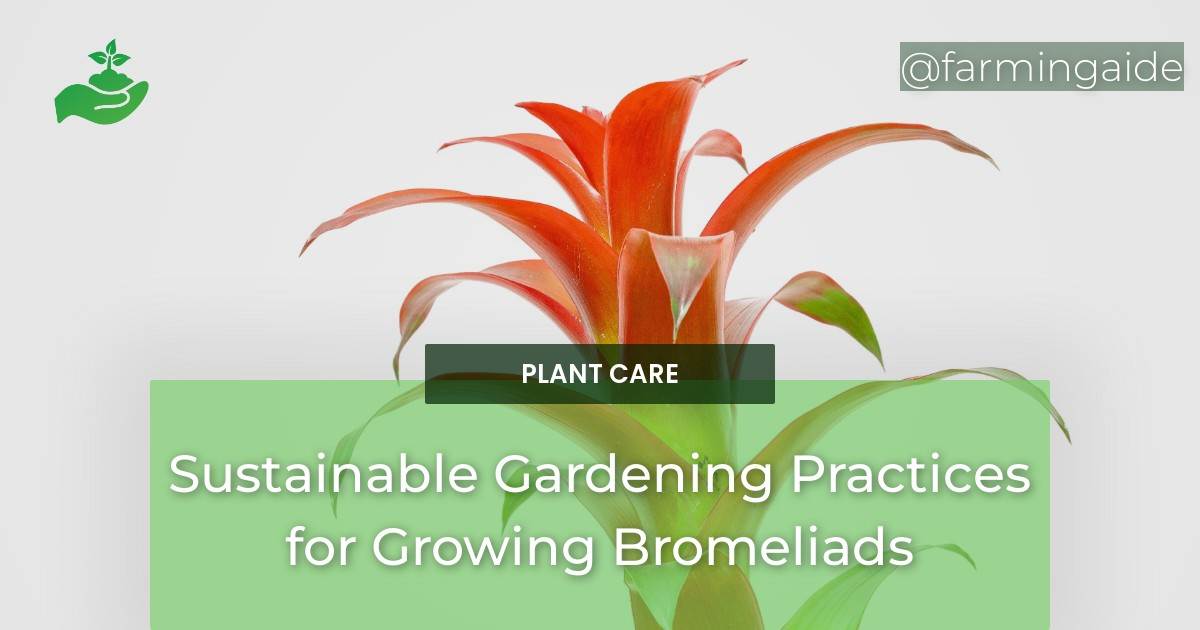Sustainable gardening practices are becoming increasingly popular as people become more aware of the impact their actions have on the environment. This is especially true in the urban farming and horticulture industry, where individuals are looking for ways to grow their own food in a sustainable and eco-friendly manner. One plant that is particularly well-suited for sustainable gardening is the bromeliad. In this article, we will explore the various sustainable gardening practices that can be implemented to grow healthy and thriving bromeliads.
Overview of Sustainable Gardening Practices
Sustainable gardening is a holistic approach to gardening that focuses on creating a healthy and balanced ecosystem in your garden. It involves using natural methods to grow plants, reducing waste, and conserving resources. By implementing sustainable gardening practices, you can not only grow healthy plants but also contribute to the health of the environment.
Plant Selection and Cultivation
When it comes to sustainable bromeliad gardening, the first step is to choose the right plants for your garden. It is important to select plants that are well-suited to your climate and growing conditions. Bromeliads are a great choice for sustainable gardening as they are hardy and can thrive in a variety of environments.
Before planting your bromeliads, it is important to understand their specific needs. These plants require well-draining soil and do not do well in waterlogged conditions. They also prefer bright, indirect light and can be grown both indoors and outdoors.
Proper techniques for planting and transplanting bromeliads are also crucial for their success. When planting, make sure to use a well-draining potting mix and avoid overwatering. If transplanting, be gentle with the plant’s roots and ensure that the new location has the right conditions for the bromeliad to thrive.
Soil Management and Composting
Soil plays a vital role in sustainable gardening, and this is no different when it comes to growing bromeliads. It is important to test and improve the quality of your soil to ensure that your plants have the necessary nutrients to grow. You can do this by conducting a soil test and adding organic matter or fertilizers as needed.
Composting is also an essential aspect of sustainable gardening. It not only helps to reduce waste but also provides nutrient-rich soil for your plants. You can create your own compost using kitchen scraps, yard waste, and other organic materials. Adding compost to your bromeliad garden will help to improve soil quality and promote healthy plant growth.
Pest and Disease Control
Like any other plant, bromeliads are susceptible to pests and diseases. However, in sustainable gardening, the focus is on using natural methods for pest and disease control. This can include introducing beneficial insects, such as ladybugs, to your garden or using organic pesticides made from natural ingredients.
Preventative measures are also important in sustainable bromeliad gardening. Keeping your plants healthy and well-maintained can help to prevent pest and disease infestations. Regularly inspecting your plants for any signs of pests or diseases and taking action immediately can also help to keep your bromeliads healthy.
Sustainable Gardening Practices
There are many benefits to implementing sustainable gardening practices for your bromeliads. Not only does it help to create a healthy and balanced ecosystem, but it also reduces water usage and waste. Here are some tips for incorporating sustainable practices into your bromeliad garden:
- Choose drought-resistant plants and use mulch to retain moisture in the soil.
- Collect rainwater for watering your plants instead of using tap water.
- Use natural methods for controlling weeds, such as hand-pulling or mulching.
- Rotate your crops to prevent soil depletion and promote healthy plant growth.
How Can Crop Rotation and Seasonal Planning Contribute to Sustainable Gardening Practices for Growing Bromeliads?
Seasonal planning and crop rotation are crucial aspects of sustainable gardening practices for growing bromeliads. By strategically rotating crops and planning plantings according to the seasons, gardeners can prevent soil depletion, reduce pest and disease issues, and improve overall plant health. Through careful planning and regular rotation, farmers can ensure the continuous growth of healthy bromeliads while minimizing environmental impact and promoting long-term sustainability.
Conclusion
Sustainable bromeliad gardening is not only beneficial for the environment but also for the health and growth of your plants. By implementing the practices outlined in this article, you can create a thriving bromeliad garden that is both eco-friendly and beautiful. Remember to choose the right plants, maintain healthy soil, and use natural methods for pest and disease control. With these tips, you can enjoy a sustainable and bountiful bromeliad garden for years to come.


